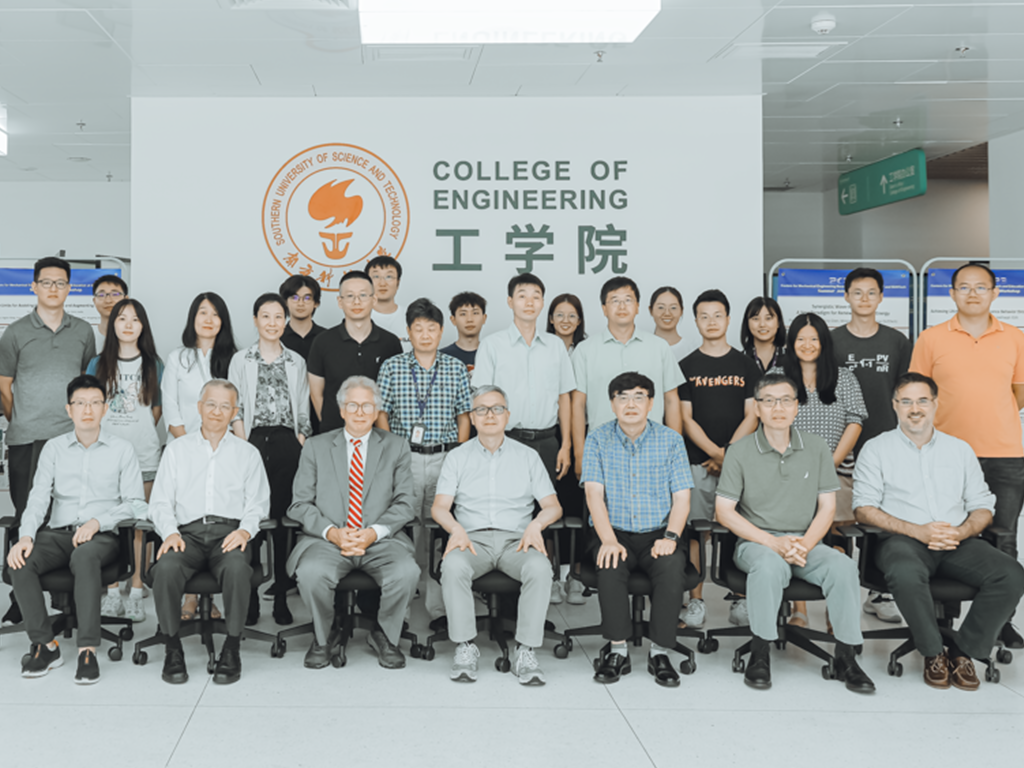Faculty and staff reflect on international collaboration, shared learning as MIT-SUSTech research agreement concludes
At its high point, the program supported 15 collaborative projects in energy and environment, materials, and manufacturing processes.
The Centers for Mechanical Engineering Research and Education at MIT and at the Southern University of Science and Technology (SUSTech) were established in 2018 to foster research collaboration and inspire new approaches to engineering education. With the five-year program reaching its conclusion this past August, faculty and staff are reflecting on the research advances and the benefits made to both campus communities, during a time of growing political tension between U.S. and China.
SUSTech, which enrolled its first students in 2011, is a research-oriented public university located in Shenzhen, a city known for its advanced manufacturing and widely considered an innovation center in China. Unlike most large universities in China, which are supported by the country’s Ministry of Education, SUSTech’s founding was funded by the city of Shenzhen itself with a mission of reforming higher education in China.
Early in the negotiation process, Gang Chen, the Carl Richard Soderberg Professor of Power Engineering, and a delegation of MIT faculty members traveled to Shenzhen to consider the benefits to MIT students and researchers of starting a collaboration. They toured factories and facilities at SUSTech and in Shenzhen, expressing enthusiasm for mutually beneficial research and learning opportunities.
"The faculty said, 'we need to bring our students there. We teach manufacturing. Our students need to know how things are done there [in the factories],'" says Chen, the collaboration’s inaugural faculty director and also the director of the Pappalardo Micro and Nano Engineering Laboratories and former head of the Department of Mechanical Engineering.
The collaboration was formalized soon after, supporting faculty-initiated research projects at MIT – offering SUSTech and MIT students, faculty, and postdocs the opportunity to learn, teach, and conduct research alongside one another at the Institute – and giving MIT faculty, students and post-docs opportunities to travel to Shenzhen to observe and benefit from innovative production environments with fast turnaround and fewer supply chain constraints.
An obvious strength of the collaboration, says Professor John Brisson, was pairing the theoretical work MIT could bring to bear with SUSTech’s experimental and production capabilities. "There are facilities that SUSTech has that we can only dream of," says Brisson, who succeeded Chen as the MIT/SUSTech Program’s faculty director.
At its high point, the Centers supported 15 research projects in clean energy and environment, materials in health care, and manufacturing processes.
Published research in health care materials included the introduction of a touch-sensing glove that can “feel” pressure and precisely measure and map subtleties of tactile dexterity, which could help restore motor function after stroke, and a surgical “duct tape” that can be applied quickly and easily as an alternative to sutures to repair leaks and tears in the gastrointestinal tract or other tissues and organs. In clean energy and environment, researchers introduced a system that efficiently harnesses solar power to generate hydrogen fuel, reducing dependence on fossil fuels.
Even with interruptions due pandemic lockdowns and travel restrictions, the program welcomed 30 undergraduate SUSTech students, as planned, and 14 MIT students visited SUSTech and Shenzhen.
"More than 100 students, postdoctoral fellows, and researchers from China and the United States have collaborated on projects, yielding fruitful outcomes that have resulted in the publication of more than one hundred papers over the past five years," says MIT/SUSTech program manager Susie Yingjing Deng.
During the Program’s tenure, collaborators gave 97 presentations at academic conferences and held 23 workshops across Europe, Japan and the United States, and received more than a dozen faculty and student awards. Many of the SUSTech students have gone on to graduate programs across the United States, including three students from the Program’s final cohort who earned admission to MIT graduate programs.
But Deng and Brisson both say the impact of the program should be measured in far more than academic success.
"I have witnessed the remarkable transformation of these students … by the end of the exchange program, they had become active members of the MIT community," says Deng.
Brisson salutes the efforts of the faculty members from both schools who participated. "Programs live and die on the efforts of people," he says. In the case of the undergraduate special students who visited MIT, "we’ve changed 30 lives."
“Although it would be more difficult for such a program to proceed today, at a time of heightened tension, the SUSTech experience still suggests that there are useful benefits to collaboration,” says Richard Lester, Japan Steel Industry Professor and vice provost for international activities.
